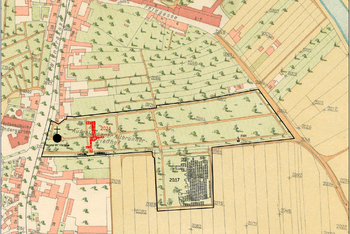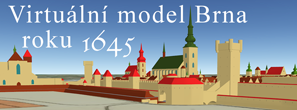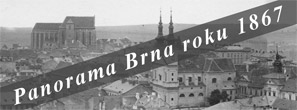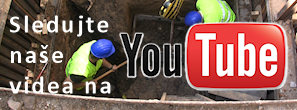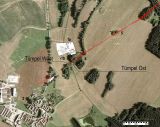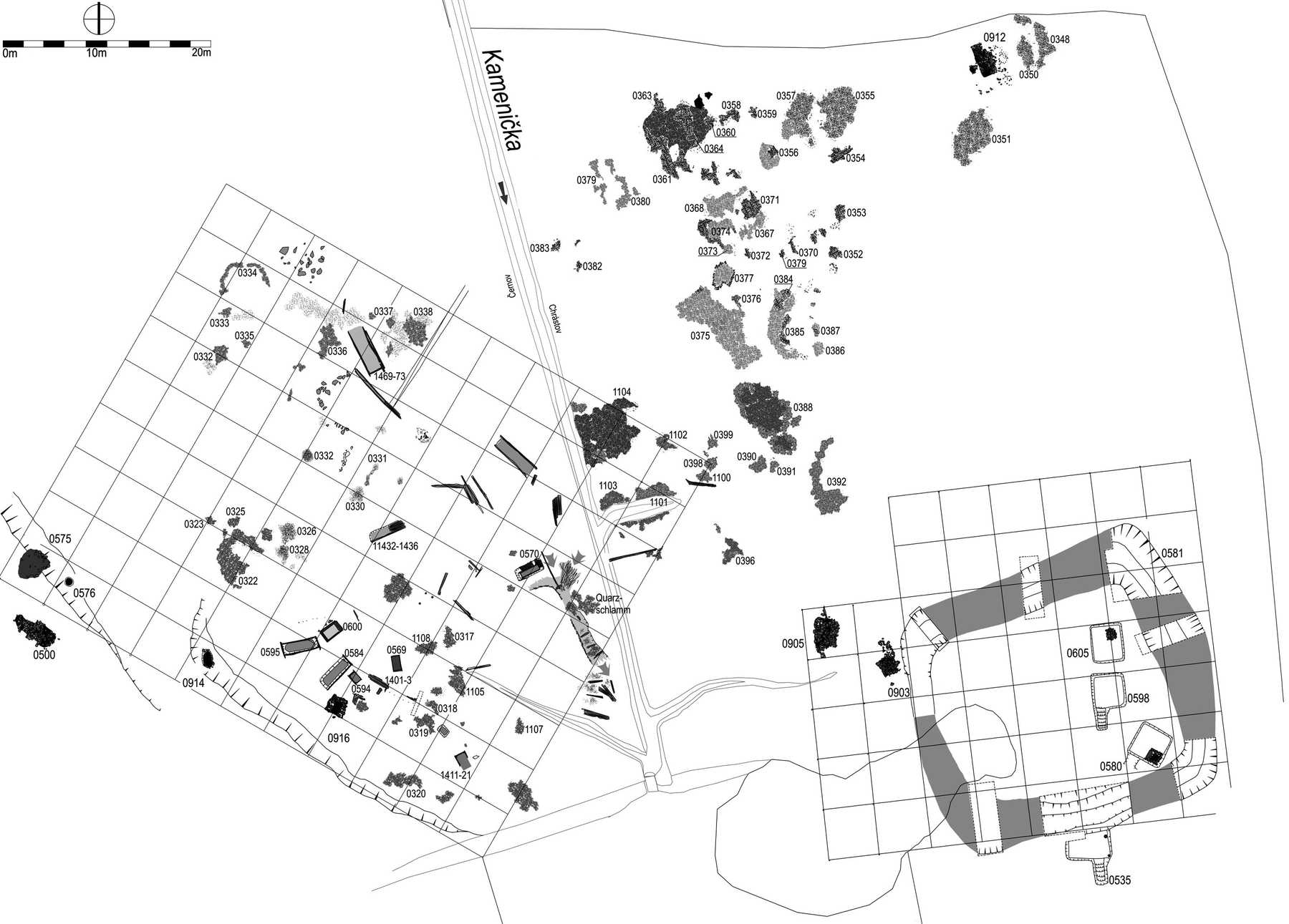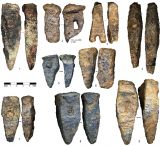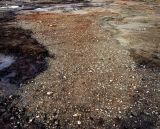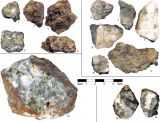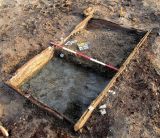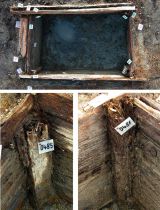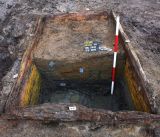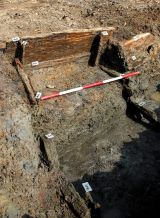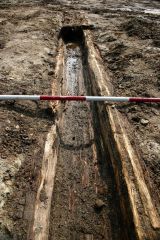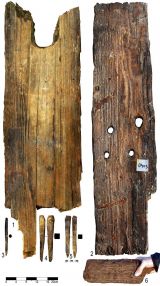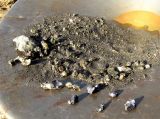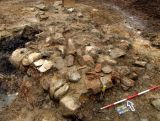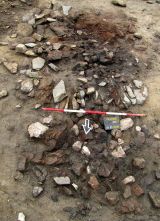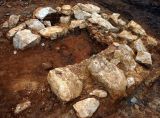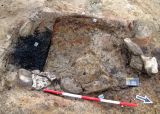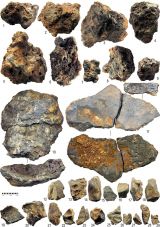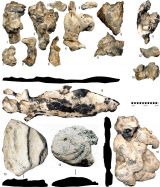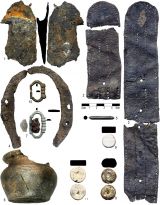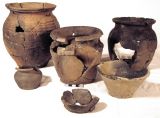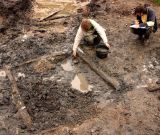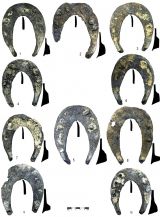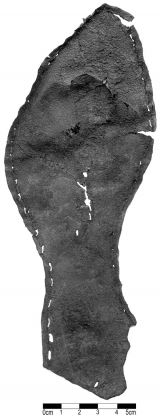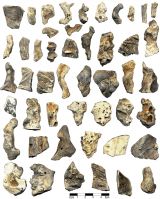Cvilínek
Petr Hrubý and Petr Hejhal (with Jiří Vosáhlo comments)
Context of the excavations: In a central Uplands of Bohemia has been discovered till unknown areal of 13. century, which can be designed like a mining works (altitude about 645 m). There are a vestiges of a former mullock tips (ganguage, ores and other material). Pits (shafts) has not been detected, although the distance of the exploited ore vein was about 20-40 m from the excavated area. Immediatelly by the creek has been worked the the ore washing, what seems to be documented by the deponies of a sorted and washed gangue layouts. There has been find a lot of pottery, what could be an indicia of a settlement. It is a rescue project, within there has been discovered a miediaeval mining, concentring and smelting unit, which is situated in a very small valley of Bohemian – Moravian Highlands in ore-district Pelhřimov (Town Pilgrim, about 30 km western from Jihlava). By the creek, where a new water reservoir should be projected (and supported by EU developing operation programs), are an organic sediments with the preserved wooden constructions remains. The archaeological excavation was executed by the ARCHAIA Institute of Brno - Jihlava branch (Petr Hrubý and Petr Hejhal), Archaia jih (Jiří Valkony), and technicaly supported by Museum of Jihlava (David Zimola and Milan Vokáč). In Museum of Jihlava are the wooden finds chemical conserved by Jan Luna. The geochemical and palaeometallurgical samples are analysed by Karel Malý. Concerning further research, palaeobotanical analysis by Petr Kočár of the Archaeological Institute at Plzeň University are planned as well as dendrochronological analysis by Michal Rybníček of the Institute for Wood Science and Technology at the Brno University for Forest Research and Agriculture. The excavations has been financial supported by kraj Vysočina and Národní památkový ústav.
Topography, geology and mineralogy of the site: The Cvilínek meadow (probably from the German word Zwillich or Zwillig) is located 570 m northeast from the village of Černov (Vysočina region, Pelhřimov district, Černov and Chrástov area). The mining and processing site is located in the valley and stream bed at the head reach of the Kamenička brook, 1200 m from the main ridge of the uplands and from the European watershed between the Danube and Elbe. The surface of the excavation site was about 2 ha. There is situated an ore-structure near the site, about 1100 m long (direction SW-NE) about crossing the valley. It is an area of a new projected water basin. There are no mediaeval written documents to the ore-mining. Much later, in 18. century, on this site, which belonged to the manor of Horní Cerekev, the count of Fugger with his brother tried to restore experimentally ore-mining in a pit of one, which has been called "Lotchens Grube". But because of „really succes and prosperity“ of this mining by Černov they should close the mine soon, in about 6 years, and for ever. The relatively plain terrain was formed out of crystalline rock of the Moldanubicum Massif. In the west there are gneisses and paragneisses. In the east, at the main ridge of the up-lands lie the granite mountains of the so called Central Moldanubic Pluton (700-837 m). Typical for the ore region Pelhřimov are the many small ore veins. Interesting is a spectre of ores on this reef, we could describe to this day: a pyrite, arsenopyrite and - as the geologists preliminary voiced - evan tetraedrite (rich-silver ore). This kind of ores, like tetraedryte or argentite, have been smelted by a lettle bit different metallurgical procedure, not like common lead-ores of lead (galenite) with some about 0,5 to 1,1 % Ag. The types of vein which are represented in the alteration are Quarts and Gneisse.
Exploitation site and unconfirmed galleries: There are more uncostumed situations of the archaeological objects, we have find. The medieval exploitation site is located outside of the excavation site. Partly, the former mines are still visible in the landscape as funnel shaped surface depressions, which lie at a distance of 30-70 m from the excavation site. Originally, it concerned a continous line of pits along the ore structure, which ran in SW-NE direction for 800-1000 m. There has been detected by bagger a small caverne before the proceedings with investor, projectant and much more institutes, and before the excavations started. The originaly mediaeval situation has been particulary destroyed. During the initial phase of the rescue excavation in September 2009 we detected an object full of mediaeval pottery with flatly floor plate on the right side. So first and foremost one, by what we are at the end of one´s tether, thera was this "stole", we opened. The upper part of the caverne is not cut into a solid crystaline rock, but into the terciary or quarternary slope materials, which seems to be stabil enough, but on 3 m the coluvial material started to be falling down, so without topsill and shoring we did not go down in any case. There would be done through the sheeting the stole narrow too much down, so the moving and the documentation is very very complicated or right impossible. There is a stabil water outflow. The dark layouts inside were contaminated by peaces of charcoal. Base in the caverne is cut regullarly into the unfirm and decomposed crystaline. After the technically complicated attempt to open up only 2,5 m of the adit in order to document the find, the theory was abandoned that this was a mine. Although, this adit had the form and proportions like a medieval mine, the consulted experts all concluded that it most probably was a prospecting attempt in order to check the geological conditions in the vicinity of the ore vein at approximately 80-100 m from the mineralisation and respectively the divisions between the Quarternary culluvial slope debris and the built up Crystallinicum. Nevertheless, it can be stated that, although the object is in fact a medieval underground structure, it is not a mine or gallery in the strict sense of the word. Another find concerning ore mining is a collection of four chisels, which originate from the exploitation level near the ore washing workshops. These artefacts extend the current collection of mining tools from the Pelhřimov ore region.
Seperation workshops (boose and ore lodgement), grinding process: In no way is the lodgement of boose and ore without meaning. For example, they are depicted on the altar of Annaberg, in late-medieval miniatures from Küttenberg and in Agricola’s books of the De Re Metallica. At Cvilínek the lodgements lay within 20-30 m from the ore cleaning sites. They were most likely used as seperation workshops or as ore lodgement for pounding or ore roasting. These finds are mainly concentrated at the east flank of the brook valley. So, very close to the ore vein and the medieval mines which are to be expected there. Examples of the products of the pounding workshops are the pieces of pure Galenite and Pyrite, which measure 3-5 cm and that were found in the excavation levels inside a mining house. The pieces originated from a mine with an unknown function near the boose lodgement mentioned above. From the vicinity of the seperation workshops a small amount of 5 fragments of grinding stones was found. They were made out of local Granite. The fragment are an indication that there must have been some kind of grinding process inside a ore mill. Regarding the toolmarks on the fragments it is possible to distinguish two kinds of grinding stones. The first contains examples, which were not used again after breaking and simply thrown away. The second should be presented the fragments, which were secondary used as support for manual pounding or as supporting stones inside the stamp mill. Another find which indicates grinding, is the concentration of debris lodgement.
Ore washing: The interesting archaeological situation contains extraordinary well preserved remains of an ore cleaning facility inside the brook bed measuring approximately 1100 m2. It was able to identify over 700 years old parts of tecnical ore cleaning facilities, like drains or in total 11 wooden containers of different construction. From simple, one level containers with round wood frames to approximately 70 cm deep containers with solid plank walls, wooden panels, tongue-and-groove joints and corner poles. These solid construction types can still be seen in the ore processing 300 years later. For example, in Agricola‘s books of the De Re Metallica. From the bottom sediments inside the deeper container, crushed and grinded granulate of boose in different sized grains has been found. An extraordinary situation could be observed in container Nr. 0594, which was located next to a stone furnace. Its sediment contained very high amounts of pure Pyrite, Galenite, Sphalerite and Arsenopyrite ore concentrate. This ore granulate, although in earlier cases proven to be unused or not suited, in this case has to be seen as the actual main product of the ore cleaning workshop. These conditions indicate that the lead, zinc and silver ores were processed in the same way as the gold containing river sediments in the traditional gold wash. Technically, there are only few differences in the appliances needed for the silver and gold wash. It concerns the use of gravity, which seperates the heavier metal and silver parts from the ore. Next, the ore concentrate was being passed to the ore roasting workshop in order to be processed from sulfide into oxide of heavy metals.
Various traces of mettalurgy: ore roasting, test smelting by the assayer and smithies: There was the remains of metallurgy like a small amorphous peaces of lead as an involuntary residue of a manipulation with the hot lead, respectivelly lead-silver alloy. But still is a question, by what technology has it been produced and not until the chemical analyse will not be known, what more metalls excepting lead self are still inside these findings.It seems, there have been practised the other methode of an extaction of a silver: dissolving of a roasted silver ore (silveroxyde) in a smelting pots with hot lead and following the cupellation. An important group of finds form the remains of the furnaces of different contruction types. Mostly, either the base of the furnace itself is preserved, existing out of regular layers of stones, or the base of the furnace wall. The furnaces were not built individually, but merely in groups or batteries close to the ore cleaning workshops. A special role in clearing technical functions of the metallurgical workshops at Cvilínek is taken by the cinders and the debris coming from respectively casting, leading and beating processes, which were found in the form of small amorphous lead pieces. Mainly, the geophysical and metallometrical analysis will show which concrete metallurgical processes are to be expected at Cvilínek for the 13th century AD. Furthermore, in a smaller pit inside or nearby the defensive enclosure, a lead weight as well as a testing stone or testing needle was found, which might be pointing towards the presence of a test stand. Most likely, a part of the excavated slags can be interpreted as smithy slags.
Enclosure and domestic settlement: The defensive enclosure or small borough with a regular lay-out was situated in the SE sector of the excavation site, at a distance of 30-40 m of the Černov ore vein. The structure is surrounded by a v-shaped moat, which was 1.5-2.3 m deep and 2.4 m wide. The surface of the moat is approximately 375 m2. The total surface of the enclosure, including the moat, measures approximately 728 m2. No other archaeological traces of defensive works, like a wooden pallisade or fence, were found neither inside nor outside of the moat. Inside the defensive enclosure, three underground remains of regular square buildings were unearthed, which are likely chronologically related to the borough and thus formed an enclosed settlement. One remaining building (Nr. 0535) is situated south of the defensive structure. The outside of the moat crosses these remains, which clearly shows that this house is of an earlier date. Mostly, they are considered to be remains of sunken parts of houses, which were in use for the mining and processing of the ore. Nevertheless, it is also possible that they served domestic purposes. In the continuing and lively discussion concerning the interpretation of the finds, the open question remains also at Cvilínek whether the two types of structures which are documented were basements of houses or perhaps sunken houses? However, at two of the structures stone furnaces were unearthed, which does not entirely exclude that they were mining buildings. It can be suspected that at such a location all functions, which were necessary for the ore processing, had their specific place. The excavated remains probably represent single smithies, lairs and other workshops as well as domestic houses of probemasters, specialists and miners. Inside the enclosure at Cvilínek were no finds like the lodgements of ore or ore vein od furnaces. They are all situated outside of the enclosure. According to the analysis of pottery and artefacts (e.g. a bronze buckel), the site must be dated 13th century AD. The wooden parts of the remaining building structures will provide a more precise dating than the 13th century ceramics, as they represent an extended dendrochronological potential. Thus, dating the mining site Cvilínek itself will be possible as well. There are 3 wooden components, whic has been succesfull dendrochronologicaly analysed to this day: they has been cut down in the years 1265 and 1266. The finds at Cvilínek form good study material, which analogically can be well compared to the 2002-2006 find situation at the neighbouring ore region of Jihlava - Stare Hory; a medieval ore mining and ore processing center from the 13th century.
Bibliography
Alper, G. 1998: Mittelalterliche Blei/Silberverhütung beim Johanneser Kurhaus, Clausthal-Zellerfeld (Harz). Nachrichten aus Niedersachsens Urgeschichte 67, 1998, 87–134.
Bailly-Maître, M.-Ch. 2002: L´argent. Du minerai au pouvoir dans la France médiévale.
Bailly-Maitre, M.Ch. – Tillier, A. 2008: Une petite agglomération miniére médiévale: la question de la valorisation. In: Bailly-Maitre, M.Ch. – Jourdain-Annequin, C. – Clermont-Joly, M (dir.) 2008: Archéologie et paysages des mines anciennes de la fouille au musée. Paris, 174-185.
Bartels, Chr. – Fessner, M. – Klappauf, L. – Linke, F. A. 2007: Montanregion Harz. Kupfer, Blei und Silber aus dem Goslarer Rammelsberg von den Anfängen bis 1620. Die Entwicklung des Hüttenwesens von den frühmittelalterlichen Schmelzpätzen im Wald bis zur Metallerzeugung in großem Maßtab am Beginn des 17. Jahrhunderts nach den archäologischen und schriftlichen Quellen. Bochum.
Clerc, P. 2008: Le Puits Jade, un ensemble clos du XVIe siécle dans la mine d´argent Saint-Louis-Eisenthur á Sainte-Marie-aux-Mines (68). In: Bailly-Maitre, M.Ch. – Jourdain-Annequin, C. – Clermont-Joly, M (dir.) 2008: Archéologie et paysages des mines anciennes de la fouille au musée. Paris, 102-107.
Dahm, C. – Lobbedey, U. – Weisgerber, G. 1998: Der Altenberg. Bergwerk und Siedlung aus dem 13. Jahrhundert im Siegerland. Bonn.
Fluck 1993: P. Fluck, Montanarchäologische Forschungen in den Vogesen. Eine Zwischenbilanz. In: H. Steuer/U. Zimmermann (Hrsg.), Montanarchäologie in Europa. Berichte zum internationalen Kolloquium „Frühe Erzgewinnung und Verhüttung in Europa“. Archäologie und Geschichte 4 (Sigmaringen 1993) 267–290.
Fluck, P. 2000: Sainte-Marie-aux-Mines. Les mines du rêve. Guebwiller.
Fröhlich, J. 2005: Archeologické doklady rudných mlýnů a stoup v Čechách, na Moravě a ve Slezsku. In: Stříbrná Jihlava 2004. Sborník příspěvků (Jihlava 2005) 70–76.
Goldenberg, G. 1990: Die Schlacken und ihre Analysen. Relikte der Metallgewinnung und Metallverarbeitung. Freiburger Universitätsblätter 109. Erze, Schlacken und Metalle. Früher Bergbau im Südschwarzwald, 1990, 147-172.
Goldenberg, G. – Fröhlich, M. 2006: Der Birkenberg bei Bollschweil – St. Ulrich. Ein Bergbaurevier aus dem Mittelalter. Bollschweil.
Goldenberg, G. – Steuer, H. 2004: Mittelalterlicher Silberbergbau im Südschwarzwald, In: Markl, G.- Lorenz, S. eds: Silber Kupfer Kobalt. Bergbau im Schwarzwald. 2004, Filderstadt, 45-80.
Hejhal, P. – Hrubý, P. – Malý, K. 2006: Doklady rudních mlýnů ze středověké důlní aglomerace Staré Hory u Jihlavy – Nachweise von Erzmühlen in der Bergbauagglomeration Staré Hory (Altenberg) bei Jihlava (Iglau), Archeologické výzkumy v jižních Čechách 19, 259-288.
Hrazdil, V. – Dočkal, P. – Vokáč, M. 2007: Rudní lokality na Českomoravské vrchovině s nálezy hornických nástrojů – Gezähefunde aus polymetallischer Erzlagerstätten des Böhmisch-mährischen Berglandes, Stříbrná Jihlava 2007 – Silberne Stadt Jihlava 2007, 282-305.
Hrubý, P. – Hejhal, P. – Malý, K. 2007: Montanarchäologische Forschungen in Jihlava-Staré Hory (Iglau-Altenberg, Tschechien), Zeitschrift für Archäologie des Mittelalters 35, 17-60.
Hrubý, P. et al. 2006: Hrubý, P. – Jaroš, Z. - Kočár, P. – Malý, K. – Mihályiová, J. - Militký, J. – Zimola, D. 2005: Středověká hornická aglomerace na Starých Horách u Jihlavy – Das mittelalterliche Bergbauzentrum in Staré Hory (Altenberg) bei Jihlava (Iglau), Památky archeologické 97, 171-
Ježek, B. – Hummel,J. 2001: Georgii Agricolae De Re Metallica Libri XII – Jiřího Agricoly dvanáct knih o hornictví a hutnictví. Ostrava.
Litochleb, J. 1996: Pelhřimovský rudní revír, Stříbrná Jihlava. Seminář k dějinám hornictví a důlních prací na Vysočině, Jihlava 16.9.-17.9, 8-18.
Luna, J. – Zimola, D. 2007: Historické hornické nástroje z centrální Českomoravské vrchoviny – Historische Gezähe aus dem Zentralraum des Böhmisch – mährischen Berglandes, Stříbrná Jihlava 2007 – Silberne Stadt Jihlava 2007, 306-325.
Malý, K. - Rous, P. 2001: Ověření výpovědních možností strusek z Jihlavska a Havlíčkobrodska – Beglaubigung der Aussagemöglichkeiten der Schlacken aus Iglauland und aus der Gegend bei Havlíčkův Brod (dt.: Deutsch - Brod). In: Nekuda, V. (Editor): Archaeologia historica 26. Sborník příspěvků přednesených na 32. konferenci archeologů středověku České republiky a Slovenské republiky s hlavním zaměřením na získávání a zpracování surovin Čáslav 25. – 28. září 2000. Čáslav – Brno, 67–87.Schwabenicky, W. 2007: Beziehungen zwischen mittelalterlichen Burgen und Bergbau – Vztahy mezi středověkými hrady a hornictvím, Stříbrná Jihlava – Silberne Stadt Jihlava 2007, 130-147.
Maus, H. 1990: Die Erzlagerstätten des Südschwarzwaldes. Freiburger Universitätsblätter 109. Erze, Schlacken und Metalle. Früher Bergbau im Südschwarzwald, 33-42.
Rous, P. – Malý, K. 2004: Průzkum terénních stop po zpracování polymetalických rud na Havlíčkobrodsku – Untersuchung der Geländespuren von der Verarbeitung polymetalischer Erze in der Umgebung von Havlíčkův (Deutsch-) Brod. In: Nováček, K. (ed): Těžba a zpracování drahých kovů: sídelní a technologické aspekty. Mediaevalia archaeologica 6. Praha – Brno – Plzeň, 121-144.Schwabenicky, W. 2009: Der mittelalterliche Silberbergbau im Erzgebirgsvorland und im westlichen Erzgebirge. Chemnitz.
Schwabenicky, W. 2007: Beziehungen zwischen mittelalterlichen Burgen und Bergbau – Vztahy mezi středověkými hrady a hornictvím. In: Stříbrná Jihlava – Silberne Stadt Jihlava 2007, 130-147.
Schwabenicky, W. 2009: Der mittelalterliche Bergbau im Erzgebirgsvorland und im westlichen Erzgebirge. Chemnitz.
Steuer, H. 2003: Montanarchäologie im Südschwarzwald. Ergebnisse aus 15 Jahren interdisziplinärer Forschung, Zeitschrift für Archäologie des Mittelalters 31, 175-219.
Vitouš, P. 1974: Lazar Ercker: Kniha o prubířství. Praha.
Waldhauser, J. – Daněček, V. – Nováček, K. 1993: Eine hochmittelalterliche Aufbereitungslage für goldhaltige Erze im Bergbaurevier von Kašperské Hory (Bergreichenstein) in Böhmen. In: Steuer, H. – Zimmermann, U. (Hsg): Montanarchäologie in Europa. Berichte zum internationalen Kolloquium „Frühe Erzgewinnung und Verhüttung in Europa“ in Freiburg in Breisgau vom 4. bis 7. Oktober 1990. Sigmaringen, 391-400.
Links:
//www.archeologie.ji.cz/
//www.muni.cz/sci/research/projects/3120
//www.ugv.cz/
//woodinrivers.eu/onas/und
//www.archaiajih.cz
//www.kar.zcu.cz/index.php
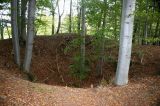
Surface relics of a ore exploitation zone at the vein of Černov, approximately 720 m NE of the excavation site at Cvilínek.
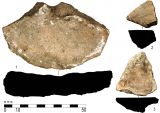
Grinding stones from the ore and boose lodgement. Stratigraphical, they belong to the surface of the exploitation levels.
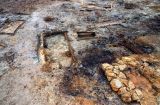
Ore wash with wooden cleaning facilities and a furnace (Nr. 0916) in the west sector of the excavation site (comp. Fig. 5).

Grinded and washed ore deposit (ore concentrate) from the floor of container Nr. 0549 just washed at excavation.
Život a smrt v Brně: Starobrněnský hřbitov vypráví zapomenuté příběhy
28. 03. 2025 – Lenka Sedláčková – Kristýna Kuklová – zobrazit
Rekonstrukce teplovodní sítě v brněnských Štýřicích, která
proběhla v loňském roce, přinesla nejen řadu zajímavých
archeologických objevů, jako jsou mamutí kosti, pravěké pohřby,
pochodový tábor římské armády či osídlení z 11...
